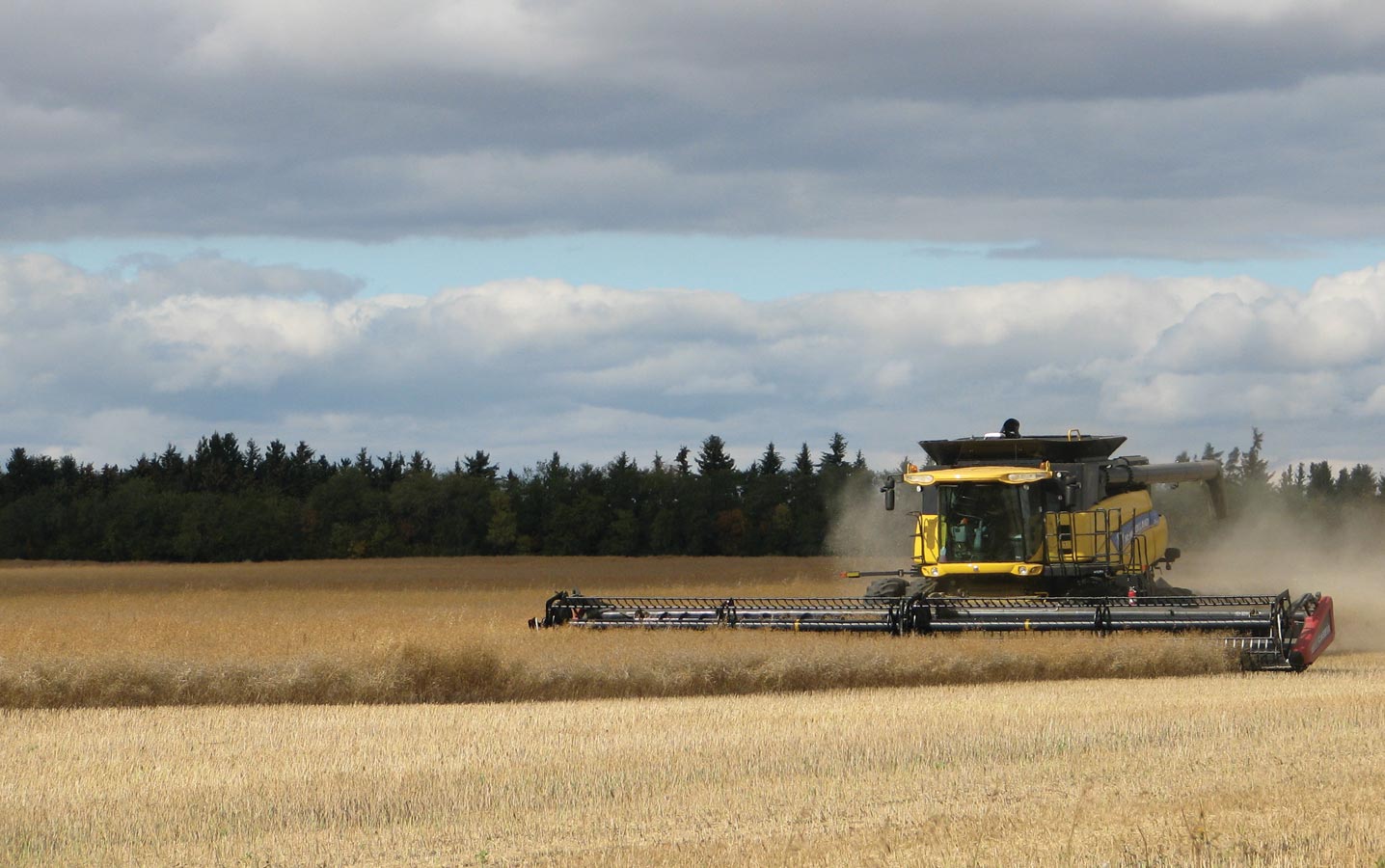What we know about straight combining canola
The key argument in favour of straight combining canola is the savings in time, labour and possibly machinery. On a farm with limited labour available at harvest, not having to swath canola can free up a lot of time and labour for combining. If farms decide to straight combine all canola, selling the swather may be an option.
The major benefit for swathing over straight combining, and this is a big one for many growers, is harvest timing. Standing canola can take longer to be harvest-ready. When it is ready, growers historically had a fairly narrow window to get the job done before shattering losses become excessive. Shatter-tolerant varieties have greatly reduced this risk, but harvest-readiness can still take longer for standing crop.
Another potential downside to straight combining is that when seeds and pods are ready, stems may be somewhat tough, making the combine work harder. Uneven crop and green weeds can also slow the harvest process. Pre-harvest sprays will dry down biomass to reduce or eliminate this factor.
Even with improvements in genetics and the option to use a dry-down spray, growers may still experience more flexibility with harvest timing when they swath canola.
Studies suggest that, on average, late-swathed and straight combined canola will yield about the same. The key is swath timing. An early-swathed canola crop has shown to be the lowest yielding of all treatments. Seed quality seems to be the same for both.
Risk factors for straight combined canola
Variety. Studies at Indian Head Agricultural Research Farm (IHARF) found that any variety can be straight combined successfully under low risk conditions. A well-knit crop with good pod integrity, low winds and timely harvest make for lower risk. However, when IHARF added varieties with pod-shatter tolerance in later years of the study, these varieties maintained their yield in a broader range of circumstances, especially if harvest is delayed.
Field choice. Flatter fields tend to have more even maturity. On rolling hills, hill tops may be prone to shatter losses and pod drop while waiting for the rest of the field to reach harvest readiness.
Stand establishment. An early-established and uniform crop with sufficient plants to narrow the range of seed maturity at harvest and to provide knitting together of mature plants will help improve harvest timing and harvestability of a standing canola crop.
Disease. Diseased plants dry down earlier and can make for uneven maturity. They also tend to lodge more. Diseased pods are more likely to shatter or drop prematurely. Limiting disease can improve harvest results for straight combining and swathing.
Weeds. Fields with a lot of late-season weeds should get a pre-harvest herbicide or be swathed.
Pre-harvest spray. Canola fields that mature early in the harvest window, are weed-free and have a good uniform stand may not need a pre-harvest spray to help with straight combining. The Prairie Agricultural Machinery Institute (PAMI) ran a trial of pre-harvest aids in 2016, comparing three treatments – Reglone, a Heat/glyphosate tank mix and natural ripening – against swathed checks. The study showed no statistical difference in yield for the four treatments, but treatments did influence harvest timing and combine efficiency. Reglone-treated plots were ready the same day as swathed treatments. Heat/glyphosate treated plots were harvested three weeks after application (partly due to a rain delay). Naturally ripened plots were ready at the same time as the Heat/glyphosate treatments. For the naturally-ripened canola, high green matter in the stand made harvest difficult. The PAMI report concluded: “Straight cut treatments with harvest aids had a higher cost of production, but the benefits of timeliness or ease of harvest may provide sufficient benefit to warrant this cost for certain operations.”
Combine header. Various studies have looked at headers. PAMI just finished a three-year study comparing rigid auger, draper and extended-knife headers. It concluded that all headers did the job within acceptable limits, but the extendable knife (PAMI used New Holland’s Varifeed in its study) did have lower losses, in general. Other studies came to similar conclusions about extendable-knife headers.
Harvest timing. The general recommendation is to straight combine canola as soon as possible after the seed falls below two per cent green content and is dry enough to store. Delays can increase shattering losses for varieties without shatter tolerance.
Lodging. Some lodging can be beneficial for straight combining canola. A slight lean tends to knit together plants to so they don’t move as freely in the wind. Heavily lodged crop, especially if lodged in all directions, might be a better candidate for swathing.
Weather. Weather factors that influence the harvest decision include:
Wind. Mature crop whipping in the wind can increase shatter losses. While swaths can also roll in the wind, the risk is probably higher with standing crop.
Hail. Hailed canola fields often grow back at various stages. While straight combining works best for an even-maturity crop, leaving a hailed crop standing for straight combining may allow more of the later pods
to mature and contribute to yield. Desiccation may
be required.
Fall rain or snow. Standing crop is often ready to combine sooner after these events, but heavy snow can push down standing crop, making it difficult to pick up.
Frost. Frost provides some natural desiccation that may help soften weeds and green stems for straight combining. Harvest may need to occur shortly after a frost.
Storage. In cases where straight combining results in higher levels of green dockage (either from crop material or weeds), this would increase the storage risk — as high moisture dockage could be a start-point for spoilage.
Want to share your experiences – good and bad – with straight combining canola? Email the editor, Jay Whetter, at whetterj@canolacouncil.org





